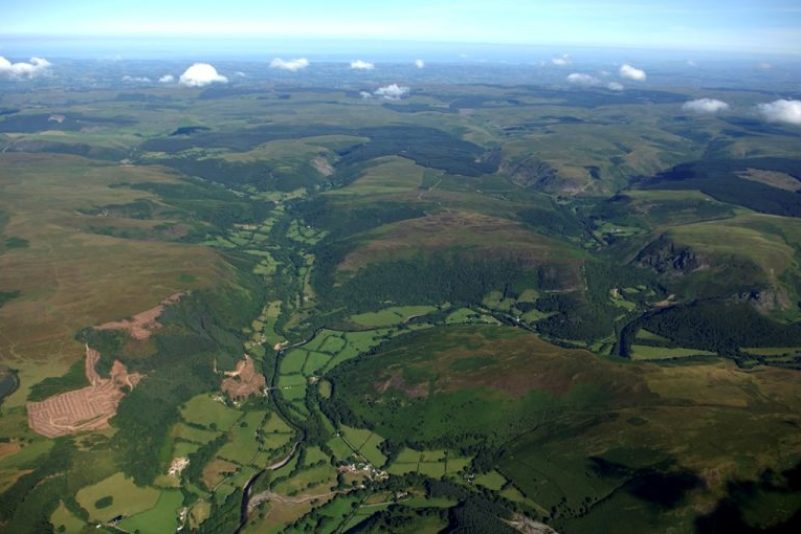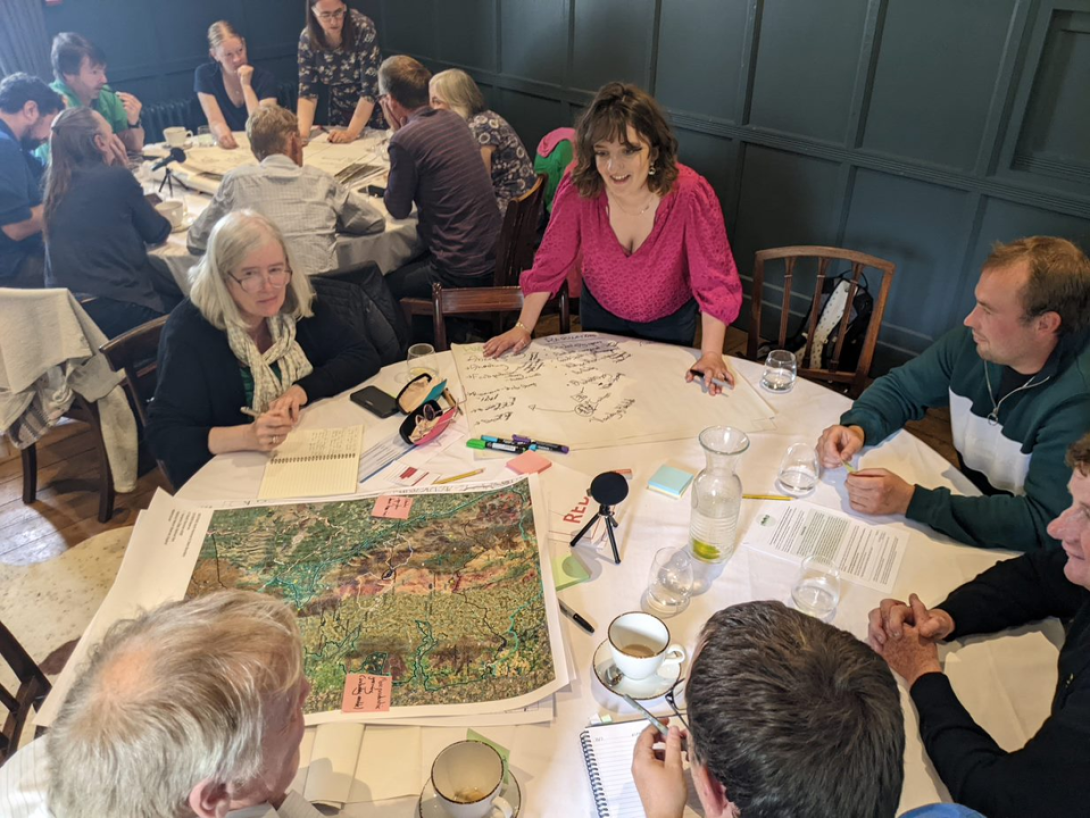Opportunities for Treescape Expansion in Upland Landscapes: Combining stakeholder visioning and spatially explicit land-use scenario planning

Scenarios for Future Treescape for People and Nature (STAND) is a Future of UK Treescape project which seeks to understand how treescape expansion can be designed and governed to achieve the best outcomes for people and nature at both local and national scales. The STAND project is led by RSPB Conservation Science, in collaboration with Cardiff University and the University of the Highlands and Islands. We have used a range of methods, focusing on two upland landscapes, the North Pennines and Dales, England and Elenydd, Wales. Upland landscapes might expect to see disproportionate change because of the perception that opportunity costs (e.g. from foregone agricultural activities) are low, however they are also highly culturally embedded having been shaped by traditional practice. This has resulted in social conflicts relating to land-use change which threaten their cultural fabric.

Image 1: STAND Team, left to right: Dr Tom Finch, Dr Melissa Minter, Dr Natasha Constant. Alix Syder, Professor Susan Baker, Jon Hall (illustrator and note taker), Dr Euan Bowditch and Dr Sheena Carlisle.
During the STAND project a two-part workshop series was conducted as part of a larger Participatory Scenario Planning exercise in each of the two upland landscapes. The following two papers report on the visions developed by local stakeholders during the first round of workshops. The workshop used a deliberative process with a series of activities to elicit stakeholders’ land-use values and prompting questions to create a 2050 vision for the landscape. Visions were created by four stakeholder groups each representing a broad land-use interest, Access, Conservation, Farming and Land management (i.e. forestry, sporting, water). Each groups vision was converted into spatially explicit scenarios (Paper 1) to predict the consequences on biodiversity, and ecosystem services compared across the four stakeholder groups. Stakeholder discussions during the exercises were analysed thematically to unpack values and contextual factors which influence their decision making and preferences during the visioning process (Paper 2).

Image 2: Stakeholder workshop in North Pennines and Dales, creating their visions for future land- use.
Whilst local stakeholders recognised multiple benefits which treescapes expansion could offer, primarily around water storage, climate and biodiversity, overarching concerns remain that tree planting threatens upland habitats and the ecosystem services they provide. All stakeholders identified opportunities for increasing tree cover, however scaling up from the landscape-scale to deliver national objectives requires flexibility in the application of treescape policy to align with the depth of socio-cultural values shaping land-use preferences. Natural processes are more in-keeping with the cultural values of landscape character, but current delivery mechanisms lack flexibility, small-scale integrated options and associated training to compliment local stakeholders’ preferences. Negative attitude of farmers towards tree planting may also be embedded in their experiences with top-down policy implementation due to poor consultancy processes and compounded concerns over the rate and scale of change in uplands.
By considering the influence on contextual factors on stakeholder preferences through deliberative methods, we can enhance our understanding of how cultural systems act in competition with other structural factors to shape a community’s land-use and decision-making preferences. This, in turn, contributes to a more nuanced understanding of the factors that shape the socio-political acceptability of land-use change and capture subtleties of incremental management choices alongside long-range visions. Without these deliberative processes, preferences may be over simplified, and local actors alienated from decision making.
Stakeholder treescape preferences included; non-woodland treescapes such as scrub and scattered trees, conversion of conifers to broadleaf, connected existing woodland and converted unproductive land, aligned most with stakeholders’ values of landscape. Whereas woodland creation, large-scale tree planting and high-altitude woodland expansion were less compatible with local values and preferences.
By converting stakeholder land-use visions into spatially-explicit future land use scenarios, we found that this resulted in varying treescape expansion across groups and landscapes. Stakeholder-led scenarios resulted in an increase in total tree cover from 2.5% to 3.3 – 9.7% in the North Pennines & Dales, and from 9.7% to 10.1- 26.8% in the Elenydd. We used these scenarios to predict the outcomes on greenhouse gas emissions, livestock numbers, timber production, recreation, water run-off and bird populations. With increasing tree cover we found positive impacts on greenhouse emissions and water run-off, woodland birds and nature-based recreation and mixed outcomes on timber. However, increasing tree cover was associated with reduction in livestock numbers and upland birds. While many stakeholders suggested that livestock numbers may not be representative of food production or farm business viability, all stakeholders were concerned about the potential decline in upland birds.
Click here to read Paper 1: Visioning future treescapes in upland landscapes: using deliberative processes to understand values and land-use preferences of local stakeholders
Click here to read Paper 2: Using participatory scenario planning to explore the synergies and trade‐offs from upland
treescape expansion
Subscribe to our Newsletter
A quarterly update of all LUNZ Hub activities, events and news stories.
